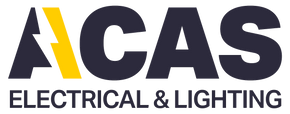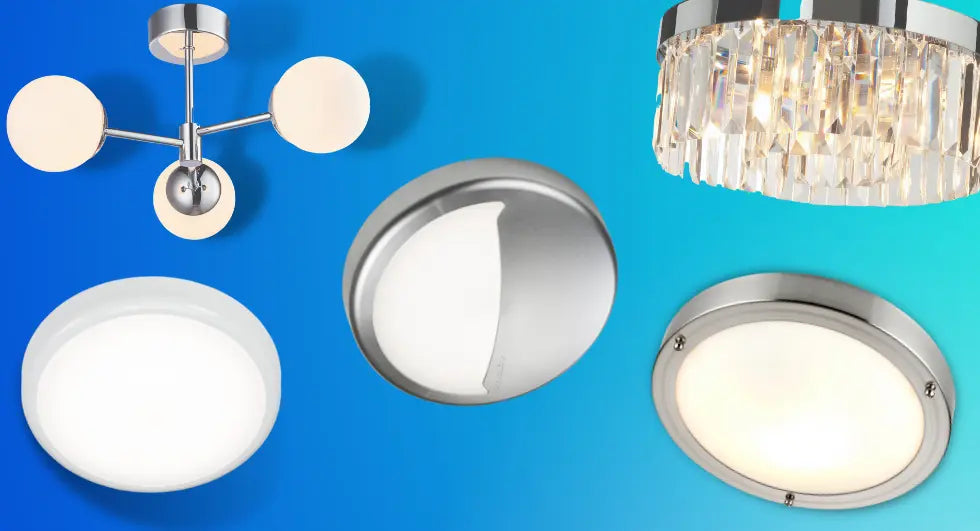When you walk into a room, lighting is one of the first things you notice. Good lighting is critical for visibility and safety, but also for giving a room ambiance and character. There are many types of bathroom lighting available, from overhead lights to lights built into vanities and medicine cabinets. Let's look at the five most common kinds of bathroom lighting and the pros and cons of each.
Fluorescent Lighting
Fluorescent lighting is a popular type of bathroom lighting. For many, it's the default option, but there are lots of other choices available if it's not right for your bathroom. When installed correctly, fluorescent lighting is energy efficient. Fluorescent lamps and bulbs use about 75 percent less energy than incandescent bulbs and last 10 to 15 times longer.
Fluorescent lighting provides good illumination with lower heat output, giving it distinct benefits since lower energy usage can reduce your electric bill and reduce greenhouse gases. You can use fluorescent light bulbs in conjunction with conventional incandescent lights to provide a wider range of illumination.
Fluorescent lights reduce the amount of moisture in your bathroom too due to their low heat output. However, fluorescent lighting has drawbacks. If you have a large bathroom with multiple small fixtures, it can be difficult to get enough light because there is not enough light output per fixture. Fluorescent lights do not give off a lot of light and they don't produce the warm glow that incandescent bulbs emit. At one time, flickering was also a problem with fluorescent lights, but most newer fluorescent bulbs are flicker-free.
Incandescent Light Bulbs
The biggest difference between incandescent light bulbs and energy-saving light bulbs is the amount of heat they generate. Incandescent light bulbs generate a lot of heat and consume more energy than energy-saving bulbs. This is due to their inefficient design, which requires more electricity to produce one watt of light. Energy-saving light bulbs use a much more efficient design to produce the same amount of lumens as an incandescent bulb.
But there are benefits to incandescent lighting. If you want your bathroom to feel like a relaxing day spa, incandescent light bulbs are the ones for you. However, if you're looking for energy savings, then these types of bulbs aren't your best choice. A second problem with incandescent light bulbs is they produce a lot of heat. You can feel this heat if you hold an incandescent light bulb in your hand for more than thirty seconds.
A final disadvantage of incandescent light bulbs is they aren't dimmable. This means you can't use them with most dimming switches, and they cannot be used with the new energy-saving dimmers that are becoming more popular.
Halogen Lights
Halogen lights are another popular type of bathroom lighting. They are one of the safest and most energy-efficient types of light. Halogen uses tungsten filaments inside the bulb. Halogen bulbs are often referred to as "quartz" or "quarts" lights and are used in many types of lights, including track lighting and halogen table lamps.
Halogen lights are used in the bathroom because of their bright, yellowish light. This type of lighting is ideal for bathrooms because it creates a sense of warmth and energy. Halogen lights give off an intense light that is ideal for making small spaces feel brighter. They last longer than other types of bathroom lighting and are available in various styles and finishes, meaning they can add luxury to a bathroom without breaking the bank.
LED Lights
LED lights are highly efficient, bright, and also energy-saving. This is one reason they're becoming more popular. They are also safe and extremely durable. LED lights are also easy to install, with no need for external ballast or transformers. LED lights are not only good for the environment but also can save you money. LED lights use about 90% less electricity than incandescent bulbs and about 50% less than fluorescent bulbs.
A bathroom mirror is a popular place for LED lights and a LED spotlight will illuminate the whole bathroom, including the mirror and your face when you shave or apply makeup. LED strips can be placed under cabinets, in a medicine cabinet, or even on top of a toothbrush holder. It's up to you where to put them.
If you want to change the look of your bathroom without spending a lot of money, consider LED strip lighting. You can also control LED lights through your home's automated system or manually with hand-held remotes.
Natural Light
Natural light is one of the best sources of lighting for any room, including bathrooms. It is also the best source for use in any bathroom remodeling project, as it can create a pleasing ambiance in your bathroom and add value to your home.
Natural light is also a money saver. You don't have to install additional lighting fixtures and bulbs inside your bathroom when you use natural light. Instead, you simply open the curtains or doors and let the sunlight shine into your bathroom.
Natural light is one of the best ways to light up your bathroom since it's free and best for the environment. You could also install skylights to tap into an abundance of sunlight without having to turn on another light source. Skylights also create a better ventilation system for your bathroom during the summer months. The only drawback is that they need maintenance from time to time, but otherwise are easy to maintain and provide a great way to add natural light into your bathroom.
The main disadvantage of using natural lighting inside a bathroom is that you can't control its direction. For your bathroom to receive enough daylight, you must ensure it has a window or a door leading outside. Of course, it is also only available during the day, so if you live somewhere with long, dark winters you will need other attractive lighting options for the darker time of the year.
The Bottom Line
Lighting is important when decorating a bathroom. It gives the room a warm and inviting feeling that makes it more enjoyable to relax in. You don't have to use only one type of lighting but can use various types. Now you know what your options are.
References:
LiveScience.com. "Does Leaving Fluorescent Lights On Save Energy?"
"Leading 5 Benefits of Led Bathroom Lighting - Downlights ...." downlightsdirect.co.uk/advice/bathroom-lighting/leading-5-benefits-of-led-bathroom-lighting/.
"6 Tips for Using a Halogen Light Bulb In Your Bathroom ...." 29 Oct. 2010, doityourself.com/stry/6-tips-for-using-a-halogen-light-bulb-in-your-bathroom.

